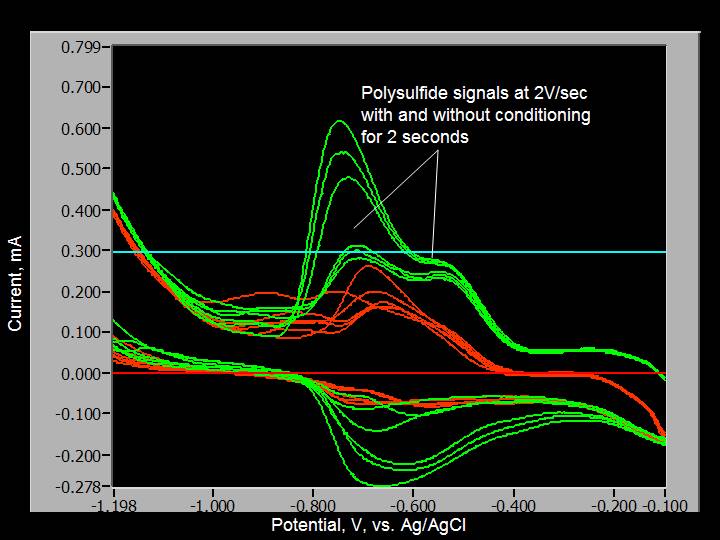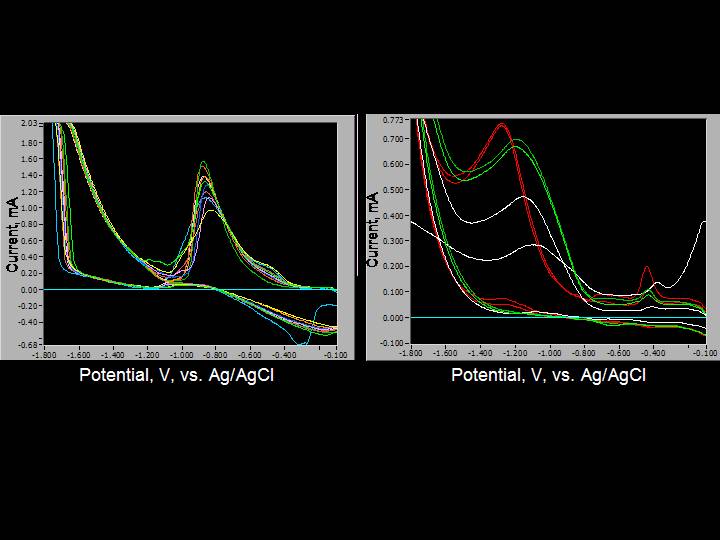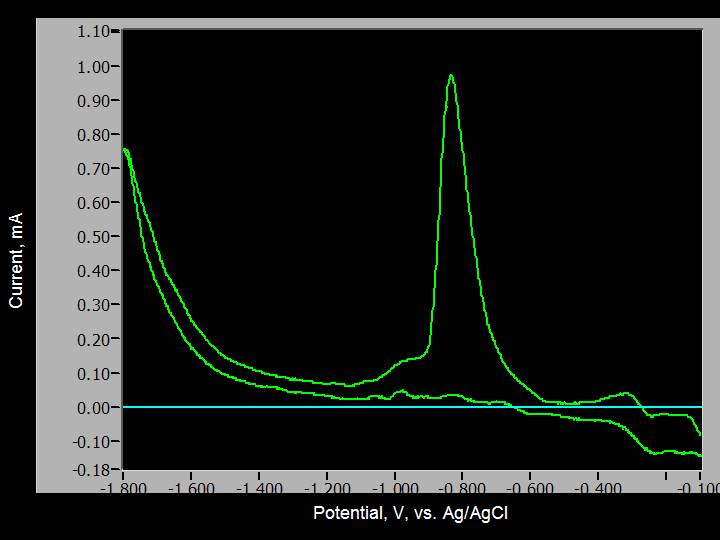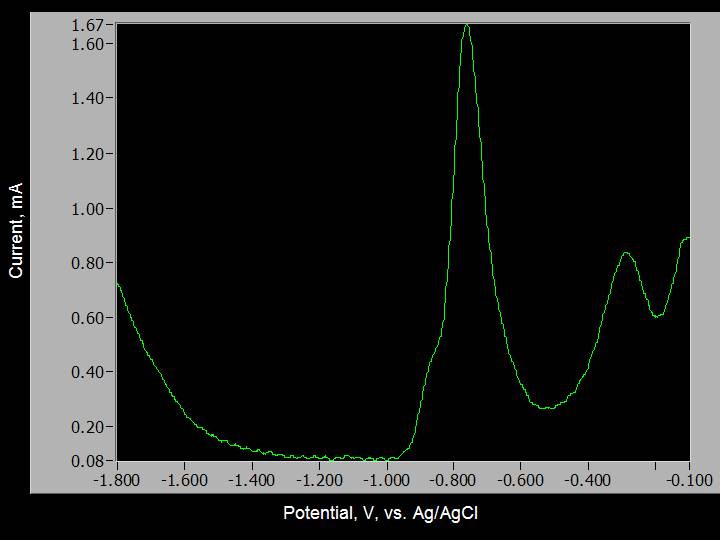Voltammetric probes to measure intermediate sulfur species were used at Yellowstone National Park:
Au-amalgam microelectrodes were used in YNP this past August at thermal springs in Norris and Sylvan basins, as well as in Alluvium Creek in Brimstone Basin.
They were able to identify H2S, HS-, polysulifdes, S2O32-, S4O62-, metal sulfide complexes, Fe2+, Fe3+, Mn2+, and As3+ at temperatures up to 90 degrees C.
Dan took microbial samples at these locations in the exact spots we were measuring the redox chemistry with the voltammetric probes.
You can see us working at cinder pool in the Norris Basin here - the retractable pole runs the wires to the probes and a tube run by peristaltic pump for sampling. Our potentiostat, batteries, and computer are in and on top of the wood box



